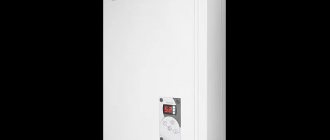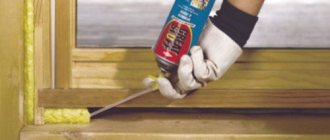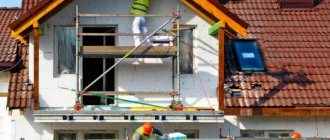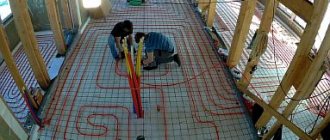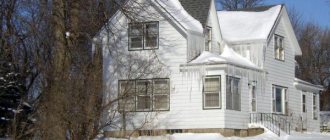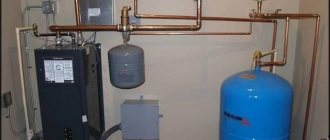Insulation methods
There are two options for insulating buildings:
- from the inside - insulate the internal surfaces of the walls, including window and door openings, perform thermal insulation of the floor and ceiling;
- outside - provide thermal protection for the facade walls, carry out work on insulation of the roofing system, including the surfaces of the attic and floor slabs. They also carry out appropriate activities in the basement.
External thermal protection of a suburban building involves significant financial and time costs. Here it is necessary to take into account the climatic factor, the complexity and labor intensity of installing hydro-, steam- and thermal insulation, and the cost of construction and finishing resources.
For internal thermal insulation work, exclusively environmentally friendly resources are used. You also need to take into account that when insulating a country house from the inside, the square footage of the usable area inevitably decreases.
The method of thermal protection of a country home is chosen individually. However, experts say that comprehensive thermal insulation of internal and external surfaces contributes to a significant increase in the performance characteristics of the structure. The risk of heat loss is minimized, a comfortable indoor microclimate is created, and the durability of the structural elements of the structure is improved.
Types of insulation
They produce various types of insulators, which stand out for their performance characteristics.
Mineral wool
This category of insulating materials is made on the basis of mineral substances and is divided into the following types:
- slag wool - made from metallurgical waste;
- glass wool - produced from waste from glass production;
- stone wool - created on the basis of rocks such as limestone, dolomite, diabase, basalt.
Mineral wool is produced in mats and rolls and is used as a heat and sound insulator when arranging walls, floors, and floor slabs.
Features of mineral wool:
- low thermal conductivity coefficient;
- high rates of heat and noise insulation;
- resistance to high temperatures;
- resistance to microbiological threats;
- zero flammability, ability to resist the spread of fires.
Mineral wool - insulation for a country house
The disadvantages of mineral wool include vapor permeability and reduced service life when exposed to moisture, so it is necessary to use it in combination with a waterproofing layer.
Expanded polystyrene foam
Foam plastic - expanded polystyrene foam - is on the list of undisputed leaders in the market of thermal insulation materials. The product is ideal for insulating the outside of a country house, especially if work is planned on a limited budget.
Features of expanded polystyrene foam:
- low thermal conductivity;
- light weight – loads on supporting structures are eliminated;
- low hygroscopicity;
- frost resistance;
- biological inertia;
- low flammability, self-extinguishing ability.
Foamed polystyrene foam attracts rodents, which easily gnaw through it, making passages. Also among the disadvantages are the reaction to chemicals and UV rays. However, polystyrene foam is always used together with a finishing coating that protects the insulation from aggressive environmental influences.
Expanded clay
Loose insulation with a porous structure is produced by foaming fusible clay and shale with inclusions in the form of sawdust, peat and solar oil, followed by firing at high temperatures.
Features of expanded clay:
- high fire resistance;
- excellent sound and heat insulation properties;
- absolute environmental friendliness;
- availability;
- high resistance to pathogenic microflora;
- resistance to chemical compounds.
Expanded clay granules can easily fill a cavity of any size. The material is actively used in the construction of floor systems, insulation of floor slabs and wall structures.
Liquid penoizol
Foam insulation - modified polystyrene foam - has high adhesion and is used to fill voids in ceilings, walls, and various horizontal and vertical surfaces.
Features of the use of liquid penoizol:
- the heat insulator is prepared directly on the construction site using a special installation;
- the composition is sprayed under pressure onto the surface to be treated;
- For sealing joints and air gaps, they offer liquid penoizol in cylinders.
Thermal insulation with liquid foam insulation provides for the solidity of the layer, the absence of cold bridges.
Fiberboard
Fibreboards are produced from wood waste by gluing fibers with natural resin compounds under high temperatures and pressure. The material is in demand as an inexpensive solution for internal thermal insulation of the walls of a country house. Fiberboard slabs are mounted using a metal frame or wooden sheathing.
Other materials
When arranging thermal insulation for a country house, a number of traditional and innovative construction resources are in demand:
- penofol - foamed polyethylene with a foil coating is produced in rolls;
- jute fabric - the insulator is simply and quickly laid on the walls using a stapler;
- insulation made of flax fiber - produced in slabs, has antiseptic properties;
- ecowool - consists of cellulose with the addition of antiseptics and fire retardants, sprayed with special equipment.
Penofol - insulation for a country house.
Polyurethane foam insulation also deserves attention. The air-foam mass is applied using a special installation, the coating is monolithic and durable with high heat, sound, and waterproofing abilities.
Types of edge profile (molding)
In addition to the laminate, the most important element of the staircase trim is the edge profile or molding. This is the name given to the overlay convex strip that is used to decorate the edge corner of the step. What is the function of molding? Everything is very simple. When finishing the stairs, two laminate strips laid on the tread and riser are joined together. An unaesthetic corner is formed, exposing the cross-section of two lamellas. To cover this joint and at the same time strengthen the strength of the laminate, edge profiles are used. They are placed on top of the joint and secured with glue or self-tapping screws.
Ordinary metal L-shaped metal thresholds are often used as an edge profile. They are also called staircases. These thresholds can be made of aluminum, steel, brass. Paintings like gold, bronze, steel or wood are popular.
Metal moldings have more than just a decorative effect. They protect the edges of the steps from wear. In addition, the surface of such a profile is often corrugated and this gives the surface of the steps an additional anti-slip effect.
Plastic thresholds - have the form of corners of different shades. You can easily match the color to your existing laminate flooring. Plastic thresholds ideally protect the edges of steps, form an even angle, and hide unevenness. They differ from other staircase thresholds at a low price
They are attached mainly with glue, so when installing plastic thresholds, special attention should be paid to choosing high-quality durable glue
Wooden sills are another option. Such thresholds go well with laminate flooring and have a long shelf life (in addition, they can be easily repaired - sanded, puttyed, painted). The disadvantage of wooden moldings is their high price. Fastening is done either with glue or with self-tapping screws (bolts).
In addition to the usual corner thresholds, there are also special laminated profiles attached to the steps using metal guides. For example, similar Incizo profiles from Quick Step (Belgium) are widely known. To install such a profile, a special L-shaped aluminum strip is used, available in several standard sizes (the height of the strip from Quick Step is 7, 8 and 9.5 cm).
To install this type of edge profile, a metal guide strip is attached to the surface of the step using screws. And then, a laminated profile is inserted into its grooves (with glue). In this way, the fixation of the profile is as strong as possible, while it is possible to do without metal fastening elements visible on the surface.
Material selection criteria
When choosing an insulator, it is necessary to consider a number of points:
- climatic features of the region;
- country house base material;
- the cost of construction and finishing resources for heat, hydro, vapor barriers and facing coatings;
- installation features.
Particular attention is also paid to the operational potential of insulation materials:
- thermal insulation properties;
- hydrophobicity;
- flammability class;
- environmental Safety.
In addition, such aspects as inertness to biological threats and the durability of the isolator are important.
Floor
There are many modern materials for floor insulation. The main thing is that the inside of the country house is as dry as possible.
Styrofoam
Expanded polystyrene does not absorb moisture, is durable, strong, and a good antiseptic. It is convenient to work with such material because it does not change the original volume.
Minvata
Mineral wool is sold in various versions: rolls, slabs, mats. Low density, environmental friendliness, wear resistance, relatively low price are its main advantages.
Penofol
The new material penofol has already shown its best side and has gained popularity. It is sold in rolls consisting of a layer of foil and insulation. Most often, the base is foamed polyethylene.
Requirements for insulation
When choosing a material for insulating a dacha floor with your own hands, do not look for the cheapest options and be sure to remember that the insulation must be:
- environmentally friendly, safe for health;
- excellent heat insulator;
- durable.
Technology and stages of external insulation of a country house
Technological features of external thermal insulation in the form of a ventilated facade include the following stages.
Preparatory work
The facade walls are treated with antiseptics in two layers to eliminate the risk of rotting. The product is applied especially carefully, including on corner surfaces and the crown. The treatment is carried out in dry weather and left to dry for 24-36 hours.
Arrangement of metal or wood sheathing
An insulating film with a vapor-permeable coating is attached to the wall, with the porous side facing the wall and the glossy side facing the street. Next, a vertical wooden sheathing is constructed. To ensure a tight fit of the mineral wool mats, the interval between the beams is maintained 4-5 cm less than the width of the insulation.
Laying thermal insulation material
Lay insulator slabs between the sheathing bars and, if necessary, temporarily attach them with slats. The final fixation of mineral wool is carried out using anchor nails. When installing mats in two layers, a technique with offset seams is used, that is, the elements of the second layer cover the tile joints of the first.
Next, a layer of wind and waterproof membrane is performed with the material overlapped using a stapler. Mounting tape is used to seal joints. The next step is to install the ventilated frame:
- the structure is constructed from the same bars that were used for lathing under the mineral wool mats;
- The ventilation frame bars are installed to the previous sheathing using self-tapping screws.
In this case, a technical gap is left between the insulation and the frame for ventilation.
Finishing activities
The following materials are recommended for cladding a country house:
- imitation timber;
- lining;
- block house;
- wood-look vinyl siding and other solutions.
Blockhouse - material for cladding a country house.
The cladding material is attached according to the manufacturer's instructions. It is important to eliminate any gaps to prevent the risk of moisture seeping into the insulation system.
Carpentry
And it’s a no-brainer that if you still have old Soviet windows in your house, then you heat not only the room, but also your yard. The thermal conductivity of glass is 0.81 W/ (m*K), exactly the same as that of brickwork, although the thickness is only 3-4 mm.
The glass unit is another matter. Properly manufactured, it significantly increases the heat transfer resistance of a window unit, and therefore people, without hesitation, take two, three, and if they sell even five chamber glass products.
The trap is that the optimal chamber width is 16 mm, and the width of the produced window profile is 32 mm.
It would seem that a two-chamber product can still be “fitted” tightly, but let’s add the thickness of the glass, and there will be as many as 3 of them and we’ll get an extra 1.2 cm.
It is important not to chase the chambers, but to understand that it is not the glass that retains heat, but the air sandwiched between them, and if the amount of this air is reduced by the same volume, heat loss will only increase.
Conclusion: not everything is good because it’s expensive!
Algorithm and features of internal insulation
The internal complex of works includes the treatment of wall surfaces, window and door units, floor systems, and roofing pie.
Thermal insulation of roof and ceiling
Work on internal insulation of the roof of a country house with mineral wool or expanded polystyrene begins with the installation of the frame. Moreover, you should first take care of vapor barrier, wind and water protection of the system. Wooden bars or metal profiles are attached to the roof with self-tapping screws, and thermal insulation boards are laid between the structural elements. Anchoring is used to fix mineral wool. Expanded polystyrene is cut to the required dimensions for installation between the profiles.
Thermal insulation of the ceiling of a country house is most often done using polystyrene foam:
- the surface is cleaned, irregularities are sealed with plaster;
- the slabs are mounted using adhesives;
- after the glue has dried, the slabs are secured with umbrella dowels;
- Next, the putty mesh is laid.
At the final stage, a layer of putty is applied, after the composition has dried, they begin to decorate the ceiling.
Thermal insulation of walls
Do-it-yourself insulation of the walls of a country house from the inside with sheets of expanded polystyrene is carried out in the following sequence:
- remove the old finishing coating;
- Wall surfaces are cleaned of dirt, dust and stains. The defects are sealed with plaster, after the mortar has dried, the walls are covered with 2 layers of primer;
- make markings using a level, taking into account that the slabs are laid from the lower perimeter of the wall structure;
- a strip of special glue is applied to the perimeter of the back side of the insulation, and a fixing composition is additionally applied pointwise - in volumetric masses - over the entire area of the slab;
- install foam plastic in the direction from bottom to top using the brickwork technique or in straight vertical lines.
Expanded polystyrene for internal insulation of the walls of a country house does not require a vapor-tight membrane.
Insulation of floors and ceilings
The structure of the floor of a country house is insulated in various ways; most often, the option of arrangement along joists is used. To do this, adjust the insulator slabs according to their dimensions and lay the material between the frame guides. If you plan to insulate the floor with polystyrene foam before pouring it with a concrete screed, the algorithm of actions includes the following items:
- a waterproofing film is laid overlapping with the edges along the perimeter of the wall, the joints are sealed with construction tape;
- polystyrene foam is laid in 1 or 2 layers;
- A reinforcing mesh is installed on top and fixed to the mortar.
Expanded polystyrene is a material for insulating the floor of a country house.
Next, a finishing screed is performed with a thickness of 60-80 mm, depending on the characteristics of the upcoming work on arranging the floor covering.
Insulation of door and window openings
Old-style wooden window frames are insulated using polyurethane foam and sealing tapes:
- after cleaning the surfaces, seal the gaps between the frame and the wall, the perimeter of the sashes, and the window sill area;
- You can use silicone sealant in a special gun. If polyurethane foam is used, care must be taken to protect it from UV rays;
- to seal cracks around the perimeter of the sashes, use D-profile sealing tape with an adhesive base;
- It is important to use polyethylene foam for insulation of slopes.
For maximum thermal insulation of window systems of a country house, it is recommended to cover the glass with heat-saving film.
The door leaf should be sheathed with insulating material, which is selected depending on the design features. It is also necessary to seal the joints between the perimeter of the door frame and the walls, while the threshold areas and the top line of the opening require special attention.
Walls
Insulation of walls is the main stage of work, since they occupy the main area of any building and have the highest heat transfer.
Surface preparation
Before insulating wooden walls, be sure to clean the entire surface of dirt. Carefully treat the inside of the walls with special solutions and aerosols that will protect the wood from insects. Then caulk all the gaps using dry tow and a thin chisel.
Insulation
Jute fabric is very suitable as a heat insulator for walls. It is quickly and easily laid with a construction stapler, does not rot, is not blown away by the wind and is not of interest to moths. Tow and jute fiber have low thermal conductivity due to their capillary structure and easily release moisture. In addition, as bactericidal materials, they successfully resist the spread of fungus.
It is not recommended to use improvised materials to insulate the walls of a country house: felt, batting, wool. They accumulate moisture abundantly. As a result, the process of rotting quickly begins, and moths are sure to appear in the wool.
Nuances of thermal insulation using different materials
When performing work, it is necessary to take into account the features of the installation technology of the selected heat insulator.
Working with mineral wool
Mineral wool easily loses its heat-protective abilities when exposed to a humid environment and shrinks, which causes the formation of cold bridges. The material must be used exclusively in conjunction with a vapor barrier membrane and a waterproof film. Work is carried out using personal protective equipment in the form of a respirator, goggles, and gloves. In the case of slag and glass wool, it is worth working in closed clothing for safety.
Let's summarize the comparison
When thermal insulation is carried out using mineral wool, the creation of a frame is a prerequisite. On the wall, vertically installed slats will act as fastening elements. In terms of installation costs, the use of polystyrene foam is beneficial. In terms of cost, this particular material is also beneficial. Its price is three times lower than mineral wool. However, when deciding to opt for polystyrene foam, you must keep the following in mind. If rodents appear in your home, they will use foam sheets to build their house. They can destroy insulation sheets, which will lead to increased heat loss.
When thinking about which thermal insulation material to choose, you should first consult with a specialist who, taking into account the room, will recommend you a suitable insulation.

